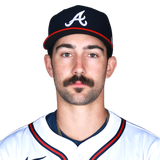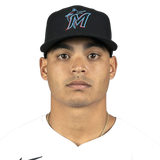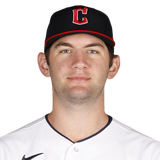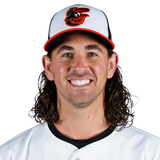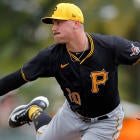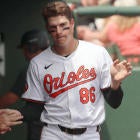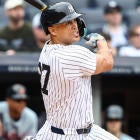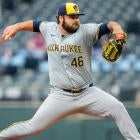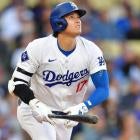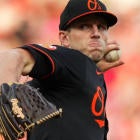
We should first establish what I mean by "innings limit" because the term, while widely accepted, has become overbroad.
The hard stop, wherein a team hits the brakes on a pitcher's season and puts him on ice until next year, has largely fallen out of favor across the league. It still happens sometimes, usually for teams well out of the playoff picture, but of course, the playoff picture is bigger than ever now. And so teams have come up with more creative ways to curtail their youngsters' innings that are less painful for everyone involved (us included).
We're already seeing it play out for the Marlins and Eury Perez. Even though the 20-year-old was sporting a 2.36 ERA, they've sent him down to the minors for an undetermined number of weeks, stalling his accumulation of innings so they can bring him back for the stretch run and, hopefully, the playoffs.
Generally, a team will permit an increase of 40-50 innings from one season to the next. Any more than that is thought to compromise the pitcher's long-term health, but it's an inexact science and, thus, more of a guideline than a rule.

Fantasy Baseball Today Newsletter
Your Cheat Code To Fantasy Baseball
You're destined to gain an edge over your friends with advice from the award-winning FBT crew.
Thanks for signing up!
Keep an eye on your inbox.
Sorry!
There was an error processing your subscription.
Presuming a five-man rotation, most pitchers have 14 turns left. At five innings a start, that's 70 innings still to be added to their season total. Using that criteria, I've identified 15 pitchers who might come into conflict with that 40-to-50-inning increase. It doesn't mean they'll be shut down, of course. Maybe they're skipped for a turn or two. Maybe their starts become shorter. The bottom line, though, is they're at risk of disruption to their usual workload. And as they enter uncharted territory for that workload, their performance may suffer as well.
For each of these 15, I offer my concern level as well as a description for how things could possibly play out. It's up to you to make a judgment call from there.
Note: Innings counts include minor-league and postseason totals. This year's are up to date through Monday, July 17.
There's almost certainly no official limit for the Braves ace, but since the team seems destined to cruise into the playoffs, they may ease up a little to ensure he's still bringing the heat when it matters most.
| ||||
Luzardo's checkered injury history has him further behind the eight ball than you might expect for someone with his experience. It's all the more incentive for the Marlins to exercise caution even as they fight for a playoff spot.
| ||||
Wells' efficiency could work in his favor or to his detriment depending what metric the Orioles use to evaluate his workload, and evaluate it they will given their realistic hopes of a deep playoff run.
| ||||
The situation appears grim, but Ober's pitch count is unusually low for all the innings he's thrown. He's also so underdeveloped workload-wise that the Twins almost have to push the envelope just to avoid carrying the issue into future seasons.
| ||||
Steele has a little bit of cushion, but he's a critical long-term asset for a team that's currently playing for third place. The Cubs may not want to push him past 150 innings or so.
| ||||
As the World Series champions position themselves for a repeat, they may pull back on their hard-throwing rookie to keep some innings in reserve. Still, any change in workload figures to be a subtle one.
| ||||
The Marlins are already taking measures to curtail Perez's innings, having him twiddle his thumbs at Triple-A for the time being. While that approach is preferable to a hard shutdown in August, further measures may still be required to protect the 20-year-old.
| ||||
The surging rookie has slightly more cushion than most, but things could get tricky if the Reds have to fight tooth and nail to capture the NL Central. It's probably to the benefit of his 2023 value, though.
| ||||
The Guardians have done a good job managing Williams' innings already, and while a playoff push could put him in a tight spot, it seems just as likely the Guardians have a quiet September that lets him ease into 150 innings.
| ||||
The Mariners are having to ride Woo harder than they'd probably like as they fight to stay in the playoff race, and a hard shutdown seems as likely for him as anyone else if and when they drop out of it.
| ||||
Kremer is in a pretty good spot innings-wise, but he accumulates them faster than most on this list, with many of his recent starts going six-plus. He derives much of his value from that workhorse quality, so any amount of easing would be a problem.
| ||||
The Orioles have to thread the needle of needing to assess Rodriguez for a playoff run without undercutting his considerable long-term value. No matter which way it goes, I don't see them pushing him much beyond 130 innings.
| ||||
The downside to Sheehan's meteoric rise is that he's underdeveloped workload-wise, and it's hard to envision him contributing in the playoffs unless he shifts to the bullpen well before then.
| ||||
As solid as Sears has been, he's not a long-term building block at age 27. Between that and his relative soft-tossing ways, the Athletics probably won't hit the brakes too hard, perhaps letting him exceed his previous high by more than 50.
| ||||
The Nationals don't need to keep anything in reserve for the playoffs, but they also won't be so inclined to push Gore, whose innings tend to be high-stress and who already has something of an injury history.
|








